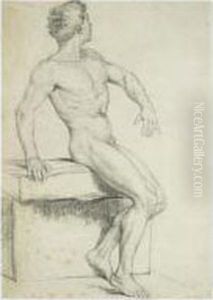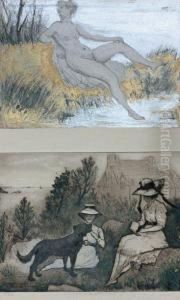Emile Sulpis Paintings
Émile Sulpis was a French sculptor and medalist, born in 1856 in Paris, France. He was active mainly during the late 19th century and the early part of the 20th century. Sulpis was known for his skilled craftsmanship and his contributions to the Art Nouveau movement, which was characterized by intricate, flowing designs often inspired by natural forms.
Sulpis studied at the École des Beaux-Arts in Paris, where he was a pupil of the esteemed sculptors Jules Cavelier and Eugène Delaplanche. This rigorous academic training provided him with a solid foundation in the classical traditions of sculpture, which he later expanded upon with his own artistic style. His education and early works coincided with a period of great innovation and change in the arts in France, as the traditional academic styles were increasingly challenged by new movements such as Impressionism and Art Nouveau.
Throughout his career, Émile Sulpis exhibited his work at the Salon, the official art exhibition of the Académie des Beaux-Arts in Paris. He received several awards and honors for his sculptures and medals, which often depicted allegorical subjects, historical figures, and themes from mythology. His works were appreciated for their fine detail, sense of movement, and the emotional depth he could convey through his mastery of form and expression.
Sulpis also contributed to the decorative arts, producing designs for items such as vases and jewelry, which were popular during the Art Nouveau period. His medals are particularly noteworthy; they reflect his ability to work on a smaller scale while still achieving high levels of detail and artistry. These medals often commemorated events or celebrated notable individuals of his time.
Despite his success during his lifetime, Émile Sulpis is not as widely known today as some of his contemporaries. Nonetheless, his work remains an important part of the Art Nouveau movement and reflects the rich artistic environment of France during his lifetime.
Émile Sulpis passed away in 1943, leaving behind a legacy of work that continues to be appreciated by art historians and collectors. His sculptures and medals can be found in various collections and museums, serving as a testament to his skill and the enduring appeal of the Art Nouveau style.

